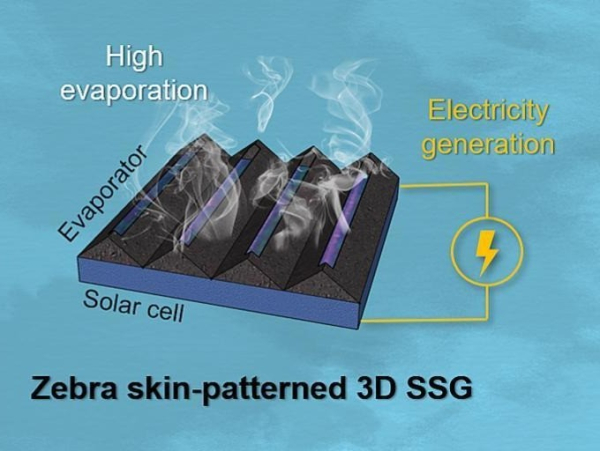
Professor Sang-min Jeon (CE) and Dr. Tawseef Wani’s research team have developed a “zebra-striped evaporator” that can simultaneously produce drinking water and electricity by evaporating seawater using solar energy. This research achievement has been published online in the prestigious international journal Desalination in the field of seawater desalination research.
According to a UNESCO report in 2024, approximately 2.2 billion people worldwide struggle to access safe drinking water. The technology of “desalination” to address the increasingly serious water shortage problem is advancing, but its application is limited in remote areas or underdeveloped countries due to high energy consumption and initial equipment costs. The Solar Steam Generation (SSG) technology, which heats water locally using solar energy to evaporate it, is gaining attention as a solution to water scarcity due to its high energy efficiency and simple structure. However, as the evaporation area increases, there is a problem where water vapor accumulates in the center, hindering evaporation. The research team approached this problem inspired by the theory that the stripes of African zebras play a crucial role in thermoregulation rather than being just a simple pattern. The black stripes absorb sunlight and increase temperature, while the white stripes reflect light and lower temperature, creating a temperature difference that induces natural air convection, thereby regulating body temperature.

The research team coated a cellulose thin film with polypyrrole, which has excellent properties for absorbing light and converting it into heat, to create a black SSG thin film, which was then cut into a striped pattern (80% black, 20% transparent space) at regular intervals. By placing solar cells beneath this structure, they designed it to enable simultaneous water evaporation and electricity generation. Further, when it was folded into a zigzag shape, rather than a simple flat plane, the device showed improved performance in freshwater and electricity production. This was due to the enhanced evaporation and increased light scattering, in addition to the air convection effect caused by the temperature difference. Compared to the two-dimensional structure, freshwater production has improved by 28%, and electricity production has also shown an improvement of about 10%.
Prof. Jeon states that the zebra-striped 3D solar evaporator has a simple structure that is advantageous for scaling up, and that it is expected to be useful in areas where electricity and drinking water supply are challenging.


